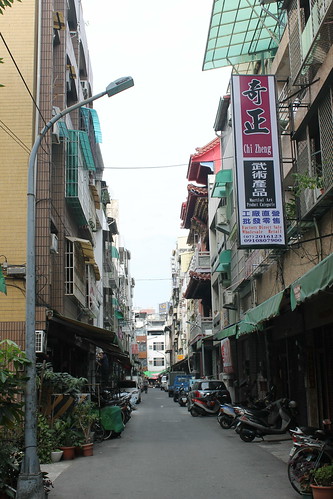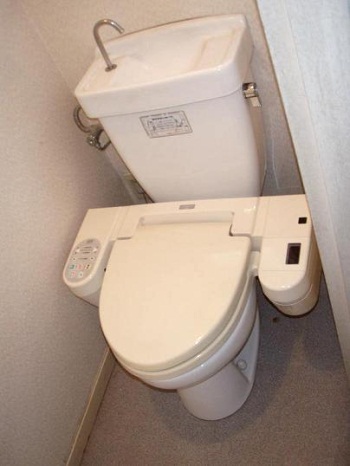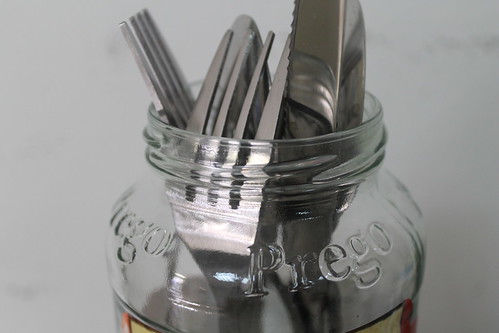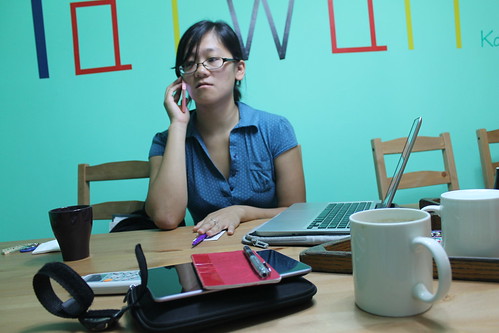My wrists are almost too weak and tired to type. I wish I could dictate this entry as I do so many of my chat messages now, not because I trust voice-to-text, but because my speed of typing (usually pretty fast) is now too slow to catch up with… my brain, which actually isn’t moving all that fast either. After flying by at 30 kmph, I am now at a complete standstill. Let’s get on with it.
Day 5/9: Kaohsiung to Hengchun (102 km)
I haven’t wanted to go to sleep this badly on this trip so far, but today’s done a real number on me. I unexpectedly met up with my friend Jake last night at the hotel, so after finishing my entry and talking to Steve, I got to bed right before 11 pm last night, and ended up with a square 7 hours, but that’s not quite enough anymore. Blargh. We woke up at 6 am as usual, and after an excellent breakfast buffet as always, headed out of Kaohsiung.
Though it was foggy and somewhat smoggy in the city, the early morning light still felt nice as we wove slowly through the city. We took a waterfront path next to the light rail which Steve and I know quite well from our time in the city. We took in the 85 Sky Tower (Tuntex Tower) from below, and biked past all the newly constructed Cultural Exhibition Center and such in the city. It took more than an hour to go just about 10 km, because we were still in Kaohsiung. When we started out of the city, we started flying down the middle of the road for 20 km at a stretch. After a rest stop for some delicious shaved ice and at another temple, we found ourselves in Pingtung County. All of a sudden, there were mango groves around us, large stretches of short trees whose fruits were painstakingly covered with plastic bags to protect them as they ripened. Though my face was mostly covered by my blue headscarf, I could smell hints of mango as we rode by. By the time we stopped for lunch, people were sufficiently tantalized by all the roadside stalls that they were pretty much ready to demand mango. We ended up having a truly magnificent meal of clay-pot roasted chicken and many, many delicious veggie and meat dishes, finishing with a delicate mushroom soup with goji berries. Other folks went in search of mango, but I ended up going for coffee, which has become a lunchtime ritual. It helps me stay awake on the bike in the two hours or so after we eat lunch, which sounds really ridiculous, but yes, I need help to stay awake while I’m furiously pumping away my legs on a highway. It’s just the truth.
After lunch, we were going to hit three hills between there and Hengchun, which is pretty much near Kenting, the bottom tip of the island. I nearly died on those three hills, pushing myself up and down and cursing. See, I had done better on the hill on the second day than I had on the first, and as a result, while biking through those flat stretches the past two days, I had come up with a Grand Unified Theory of biking on hills. I had concluded that I had figured out hills, because all we had to do was to switch about four or five gears down, and keep biking at the same speed as much as possible, but that was mostly BS, apparently. The theory falls apart when you need to go from a medium gear down to a small gear. This bike has 27 gears, and you can switch between three front gears that you then pedal on, turning the front of the chain. Those are the big differentiators, with a large, medium, and small gear. The back gear has nine different gears, and usually, I only need to switch four or five back gears down in order to make a hill, but these rolling mountains were a bit much for me. But if the back gears stay the same while the front gears change, then you make a pretty big change all of a sudden, not like the very gradual small changes when you switch the back gears.
People in their seventies kept passing me, and while I’m sure that was great for their ego, I felt like I was being destroyed. My speedometer might have said 13 kmph, but you know, anyone can walk at 6 kmph already! Other people also even kept stopping to take pictures of the gorgeous sea scenery, a glittering ocean that stretched into the Taiwan Strait, and all I could do was huff and puff and stay on. When we finally got to the rest stop, it proved to be a lengthy one. They had us lay out our bikes so they could check them up, tune them a bit, put more air into the tires, etc. etc. I just laid back after eating two slices of watermelon and gazed up at the trees above us. It took us a good half an hour to get moving after that because everyone was pretty pooped. Finally, we rode the last 10 km to our hotel, the Grand Bay Resort in Hengchun.
We had a good dinner where people shared out some Suntory they got from the 7-11, and we were treated to some impromptu karaoke by the staff. Now because we’re in a very small town with nearly nothing to do, I can finally for the first time rest before 10 pm! So I’m finishing my entry early and getting ready to wind down.
One of the last things I wanted to note is that despite all the whining, I really am very glad I’m doing this trip, and I think that’s probably obvious. Why is a bit more complex to articulate, but it’s worth it. I recently started reading The Seven Habits of Highly Effective People, which is apparently a really popular book though it sounds like it’s only for ambitious MBA-types. This book advocates that in order for people to make centered, balanced, principled decisions about what to do with their lives, they can create their personal mission statement according to their own beliefs, values, and ideals. It’s more of a process than just a one-time brainstorming, so I’m taking my time with it. However, even after thinking about it, it’s clear that I’m kind of simple when it comes to my principles. I believe that everyone has potential and value. What follows from that is that I hope I can help people develop that potential and value, which I do a lot in my daily job, and I want to develop my own potential and value as much as possible. This trip is pushing the boundaries of what I think I can do physically, and especially because it’s uncomfortable to climb these hills, I know I’m doing it.
Another statement I want to put into my mission statement is “Give what you cannot keep to gain that which you cannot lose.” And roughly speaking, youth and energy are a fleeting state in a person’s life. I’m already realizing I am less flexible, less impetuous than I used to be, and even have a few small injuries to my body that will never completely heal during my lifetime. But the feeling of accomplishment and understanding of what I am capable of doing are things nobody can take away from me once I’ve got it.
When we biked out of Kaohsiung this morning, I looked up at the 85 Sky Tower, and for the first time, felt something in my chest, and I started getting really a little emotional about this whole trip. Being in a place like Kaohsiung which I’ve visited quite a few times before, having walked where I’m now biking before, I am realizing that I’m really going to be able to do it. To bike places I had only gone on trains before, and finish this trip and come back to Taipei. I stopped getting too emotional because as I reminded myself, I’m not done with this trip yet by a long shot!! But we’re halfway through, and half-done is well begun.





